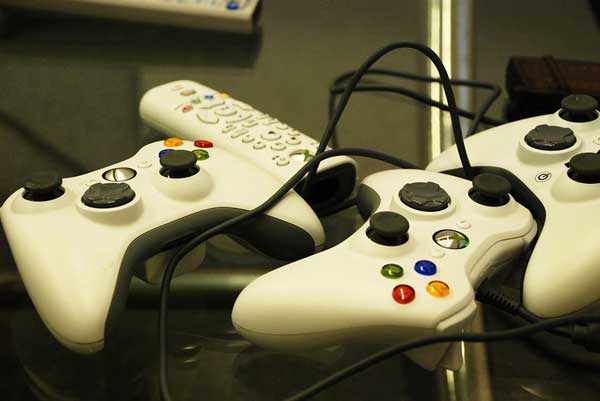The main objective of the Technical Artist Course is to bridge the gap between programmer and artists in game production. There is a great demand for such talent and very few courses are available in the world today to aspiring young person to pursue such a career.
Technical Artists role is a relatively new one for the game industry but is becoming increasingly important as game consoles and PC hardware become more complex.
The Technical Artist facilitates setting up and running the art production workflow and decision making of art packages and tools. All these involve tools development and support so as to increase productivity in the graphics pipeline.
Technical Artists are also charged with investigating new techniques and implementing them. The job often includes an instructional element, with the Technical Artist sharing his knowledge with other artists via training and mentoring sessions.
As the role of Technical Artist is a specialized one, he must be able to show technical proficiency in areas such as lighting and rendering, texturing, and graphics-related programming languages such as Shaders.
Technical Artist are expected to have extensive knowledge of art packages ranging from modeling to texturing and special effects, and be able to customize them so they are as streamlined as possible for specific projects.
The ability to work well as part of a team is also important, while training and mentoring responsibilities require good communication and people management skills. 
The Course objectives:
- A one year full time intensive course with real world production experience
- To prepare an individual who want to be a technical artist
- To provide advance training for the candidate with all major CG packages, such as Maya and 3D Max
- To introduce the individual into scripting language such as MEL scripts and Maxscripts, C++, Visual Studio, etc..
- To familiar the individual with different hardware architecture such, Xbox, PS3, and various PC.graphic system, such as nVIDIA and ATI
- Implementing CG graphic pipeline with various games engines
- Games engine development and it limitation
- To be technically proficiency in lighting and rendering, texturing, game modeling, setup, particles system, animation and graphics-related programming languages such as shaders.
- Graphic production Pipeline, workflow, development and implementation
- Creative thinking in resolving technical challenges and limitations
- Organization and communication skill
- Learning on real world project and production.
FOUNDATION MODULES
Module |
Module Name |
Description |
FINT |
Introduction to Video Game Development |
Introduces the students to the world of video game development and production. |
FELG |
Elements of Game Systems |
Introductory module to the different subsystems contained in a computer game. |
FMAT |
Modeling and Art Tools for Game Production |
Introduces the modeling and art tools commonly used to create game assets and artwork. |
FGPT |
Game Programming Tools & Technologies |
Introduces the programming tools and technology used in game development. |
F3DM |
Principles of 3D Mathematics for Games |
Foundation module in basic 3D mathematics concepts and equations utilized in games. |
FPCG |
Principles of Computer Graphics |
Foundation module in basic computer graphics concepts and techniques utilized in games. |
TECHNICAL ARTIST MODULES
Module |
Module Name |
Description |
TART |
Principles of Fine Art |
Basic module in the principles of fine art and the application of these principles to create digital art and models for games. |
TANI |
Animation for Games |
Basic module in real-time animation for technical artists. |
TBWO |
Modeling Buildings & World Objects |
This module focuses on modeling of buildings, common infrastructures and background objects. |
TEAE |
Modeling Ecology & Artificial Environment |
This module focuses on modeling and virtual recreations of natural environments, ecologies, trees and plants. |
TCHA |
Character and Animal Modeling |
This module focuses on modeling of virtual characters of both humanoid and non-humanoid nature. |
TVMM |
Vehicle & Machinery Modeling |
This module focuses on modeling of vehicular objects and other mechanical machineries. |
TTMG |
Terrain Sculpting & Modeling for Games |
This module teaches students how to sculpt and create terrains for the virtual environments in games. |
TMXS |
MaxScript Scripting |
This is an advanced module that introduces scripting for 3DS Max to students. Students will learn how to create basic scripts that would allow them to work more productively as technical artists. |
TMLS |
MELScript Scripting |
This is an advanced module that introduces scripting for Maya to students. Students will learn how to create basic scripts that would allow them to work more productively as technical artists. |
TSDR |
Shader Technology (HLSL) |
This is an advanced module that introduces programmable shaders to students. Students will learn how to manipulate and modify shader programs to achieve different visual effects. |
GAME DESIGN & PRODUCTION MODULES
Module |
Module Name |
Description |
GMGT |
Building the Game Team |
This is an exercise in creating a small game development team. |
GMDS |
Game Design |
This is an exercise in designing a new game. |
GMPR |
Game Production |
This is an exercise in setting up the game production pipeline. |
GMDV |
Game Development |
This is an exercise in the actual development of the student¡¯s game title. |
